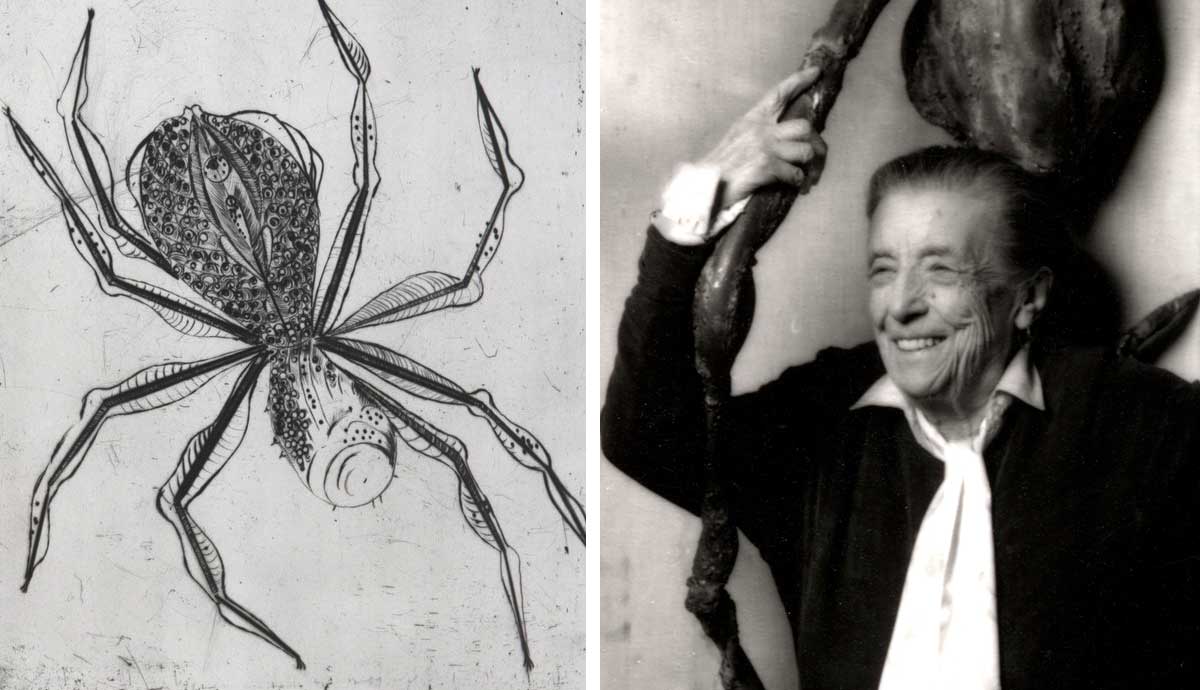
Legendary contemporary French artist Louise Bourgeois had a long, prolific and incredibly diverse career. But one of her most iconic and enduring motifs – the spider – occupied the final decades of her life. From the mid-1990s to her final year in 2010, the spider became a recurring theme that she returned to again and again. Bourgeois’ spiders took a variety of guises, ranging from small ink drawings to colossal sculptures and even jewelry. But why did she choose the humble, yet sometimes terrifying spider? In order to answer this question, we need to delve a little deeper into the personal biography of this fascinating contemporary artist.
1. Bourgeois’ Spiders Were a Symbol for Mothers

Louise Bourgeois likened spiders to her own mother. Her parents ran a tapestry restoration business and Bourgeois was fascinated by her mother’s nimble skills with a needle and thread, which she compared to the deft skills of a spider. In Ode à Ma Mère, an illustrated book from 1995, Bourgeois wrote, “The friend (the spider — why the spider?) because my best friend was my mother and she was deliberate, clever, patient, soothing, reasonable, dainty, subtle, indispensable, neat and useful as a spider.”
As well as comparing spiders to her own mother, Louise Bourgeois’ spiders can be read as a universal symbol for all mothers, who like spiders, have to be quick-thinking and resourceful. Bourgeois has said, “The spider is a repairer. If you bash into the web of a spider, she doesn’t get mad. She weaves and repairs it.” We can see this strand of thought in Bourgeois’ largest spider sculpture, made in 1999, which she titled Maman. The sculpture towers thirty-foot high overhead, while carefully carrying a series of eggs which we look up at from below. Here the spider is a maternal figure of authority, yet she is also nurturing and protective.
2. Bourgeois’ Spiders Were Self-Portraits

Louise Bourgeois was a mother to three boys, and she carried her experiences of being a mother – provider, protector, and leader – into her spider sculptures. Yet Bourgeois also compared her identity as an artist with spiders, likening her artistic activities to those of the humble spider, who can weave magical, mystical webs from fine strands of thread. In the following passage of text Louise Bourgeois reveals these thought processes: “What is a drawing? it is a secretion, like a thread in a spider’s web … It is a knitting, a spiral, a spider web and other significant organizations of space.” In another famous quote from Bourgeois: “I do, I undo, I redo,” we can also read her affinity with the spider, who is constantly building, repairing and rebuilding new webs in order to survive.
3. A Balance of Opposites

One of the reasons why Louise Bourgeois is so fascinated by spiders is the conflicting and contradictory roles they play in modern society. Spiders are, on the one hand, a symbol of fear and revulsion, and we can see these qualities in Bourgeois’ grossly oversized spiders, with their lumpy, bulbous bodies and alien-like eggs. Yet they are also weavers, makers, and protectors – many of us have stopped to marvel at spider webs glinting in the sunlight or shimmering with droplets of rain.

Bourgeois also highlights the graceful fragility of spiders in her sculptures, by balancing them on long, spindly legs. She also points out that spiders are useful predators, observing, “The spider is an animal who eats mosquitoes. That’s why I love the spider – it is the only way we have to deal with these insects.” The artist thereby compares these contradictory qualities of good/evil, fear/benevolence and strength/fragility we see in spiders to the way we think about women, mothers and motherhood, in both personal and universal contexts.










